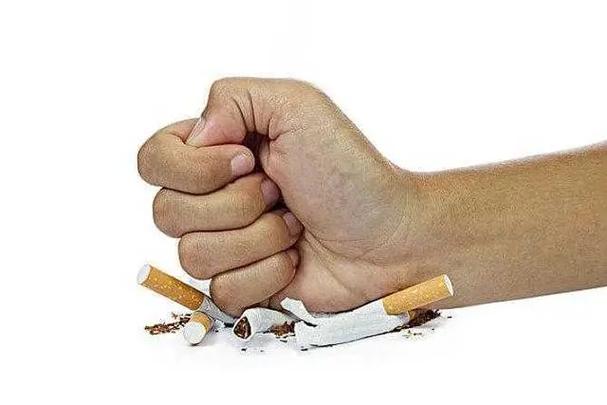The Smoke and the Steam: A Comparative Look at Taste Bud Damage from Cigarettes and Hookah
The human sense of taste is a delicate and complex symphony of chemical signals, neural pathways, and sensory perception. For centuries, the act of smoking has been intertwined with social rituals, personal habit, and pleasure. However, this pleasure often comes at a cost to our sensory organs, particularly the taste buds. A common question arises in the debate between traditional cigarette smoking and hookah (also known as shisha or waterpipe) use: which method inflicts more permanent damage on the taste buds? While both are undeniably harmful, a detailed examination of their mechanisms, chemical composition, and usage patterns reveals that conventional cigarette smoking is likely to cause more severe and permanent taste bud damage, though hookah smoking is far from a safe alternative and presents its own unique set of risks.
To understand the damage, one must first appreciate the biology of taste. Taste buds are clusters of sensory cells located primarily on the tongue. These cells have a short lifespan, regenerating approximately every 10 to 14 days. This regenerative capacity is a key defense mechanism. The primary threat from smoking is not necessarily a direct, immediate destruction of these cells, but a chronic assault that overwhelms this regenerative process. Damage occurs through several interconnected pathways: direct chemical irritation, reduction in blood flow, and systemic inflammation.
Cigarette smoke is a concentrated aerosol of over 7,000 chemicals, including established toxins and carcinogens like nicotine, tar, carbon monoxide, and hydrogen cyanide. When inhaled, this hot, dry, and chemically complex smoke directly bathes the oral cavity. The high heat and desiccating effect can physically scorch and dehydrate the delicate taste bud cells. More insidiously, the chemicals themselves are the main culprits. Tar, a sticky residue, coats the tongue, physically blocking the taste pores and preventing flavor molecules from reaching the sensory cells. Nicotine, a vasoconstrictor, tightens blood vessels, reducing the crucial blood flow needed to deliver oxygen and nutrients for the constant regeneration of taste buds. Over time, chronic exposure leads to a condition known as smoker's palate or leukoplakia, where the mucosa thickens and the number of functioning taste buds diminishes. The cumulative effect is a gradual, often imperceptible, loss of taste acuity—a condition known as hypogeusia. Smokers frequently report a reduced ability to perceive subtle flavors, requiring stronger, saltier, or sweeter stimuli to register the same sensation.
Hookah smoke, in contrast, is often perceived as smoother, cooler, and less irritating. This perception stems from the water pipe’s filtration system. The smoke is drawn from the burning charcoal through the water and then through a hose before inhalation. This process does have a tangible effect: it cools the smoke and filters out a portion of the water-soluble compounds and some larger particulate matter. This undoubtedly reduces the immediate thermal and some chemical irritation compared to the direct blast of cigarette smoke. Furthermore, hookah sessions, while often longer, are typically not engaged in with the same frequency as cigarette smoking. A pack-a-day cigarette smoker might take 200-300 puffs daily, whereas a hookah user might have a single, extended session a few times a week.
However, this is where the illusion of safety becomes dangerously misleading. The fundamental chemistry of hookah smoke is still profoundly damaging. The sweetened and flavored tobacco (maassel) is heated by charcoal. The burning charcoal itself produces high levels of carbon monoxide and heavy metals. Furthermore, studies have shown that a single hookah session can last 45-60 minutes and involve 100-200 puffs. The volume of smoke inhaled in one session can be equivalent to the smoke from 100 or more cigarettes. This massive intake exposes the oral cavity to significant quantities of tar, nicotine, and other toxicants over a prolonged period. While the smoke is cooler, the chemical assault on the taste buds is still immense. The nicotine content, though variable, still exerts its vasoconstrictive effects, impairing blood flow to the taste buds. The tar, even if somewhat reduced, still contributes to coating the tongue and damaging the epithelial cells.

Therefore, when assessing the potential for permanent damage, the critical factor is the chronicity and cumulative dose of the insult. The daily, repetitive nature of cigarette smoking creates a constant state of injury and suppressed regeneration in the oral cavity. There is insufficient time for the taste buds to recover fully between smoking episodes. This relentless cycle is highly effective at leading to long-term, and likely permanent, degenerative changes. The damage becomes ingrained, and even after quitting, some smokers never fully regain their original sense of taste.
Hookah smoking, due to its typically lower frequency, may allow for longer periods of recovery between sessions. This intermittent pattern might spare the taste buds from the constant bombardment faced by heavy cigarette smokers, potentially resulting in a slower progression of damage. However, this does not equate to safety. A regular, long-term hookah user is still subjecting their taste buds to repeated, significant toxic exposures. The risk of permanent damage is very real, especially for daily users. The initial symptoms—a diminished sense of taste, a lingering "ghost" flavor of the shisha—are common complaints among hookah enthusiasts, indicating that functional damage is occurring.
Another crucial consideration is the impact of flavorings. The molasses and fruit flavorings in hookah tobacco are highly aromatic and can create a powerful olfactory sensation that dominates the smoking experience. This can mask the underlying degradation of taste bud function. A hookah smoker might perceive a strong "flavor" primarily through their sense of smell, while their actual taste buds are being progressively damaged, a loss that may only become apparent when they are not smoking.
In conclusion, the question of which causes more permanent taste bud damage is not a simple binary. The evidence points to chronic, daily cigarette smoking as the practice with the higher risk of inducing irreversible harm due to its unrelenting, high-frequency assault on the oral environment. The cumulative, day-in-day-out exposure to heat, tar, and nicotine creates a perfect storm for permanent sensory loss. Hookah smoking, while perhaps less damaging on a per-session basis for a casual user, is a dangerous gamble. The enormous volume of smoke inhaled in a single session and the presence of the same harmful agents mean that it is certainly capable of causing significant and potentially permanent taste bud damage, particularly with regular use. The smoother experience is a deceptive veil over a significant health risk. The most definitive way to preserve one's sense of taste is to avoid all forms of tobacco smoke, recognizing that both cigarettes and hookah pose a serious threat to the delicate and precious sense of taste.












